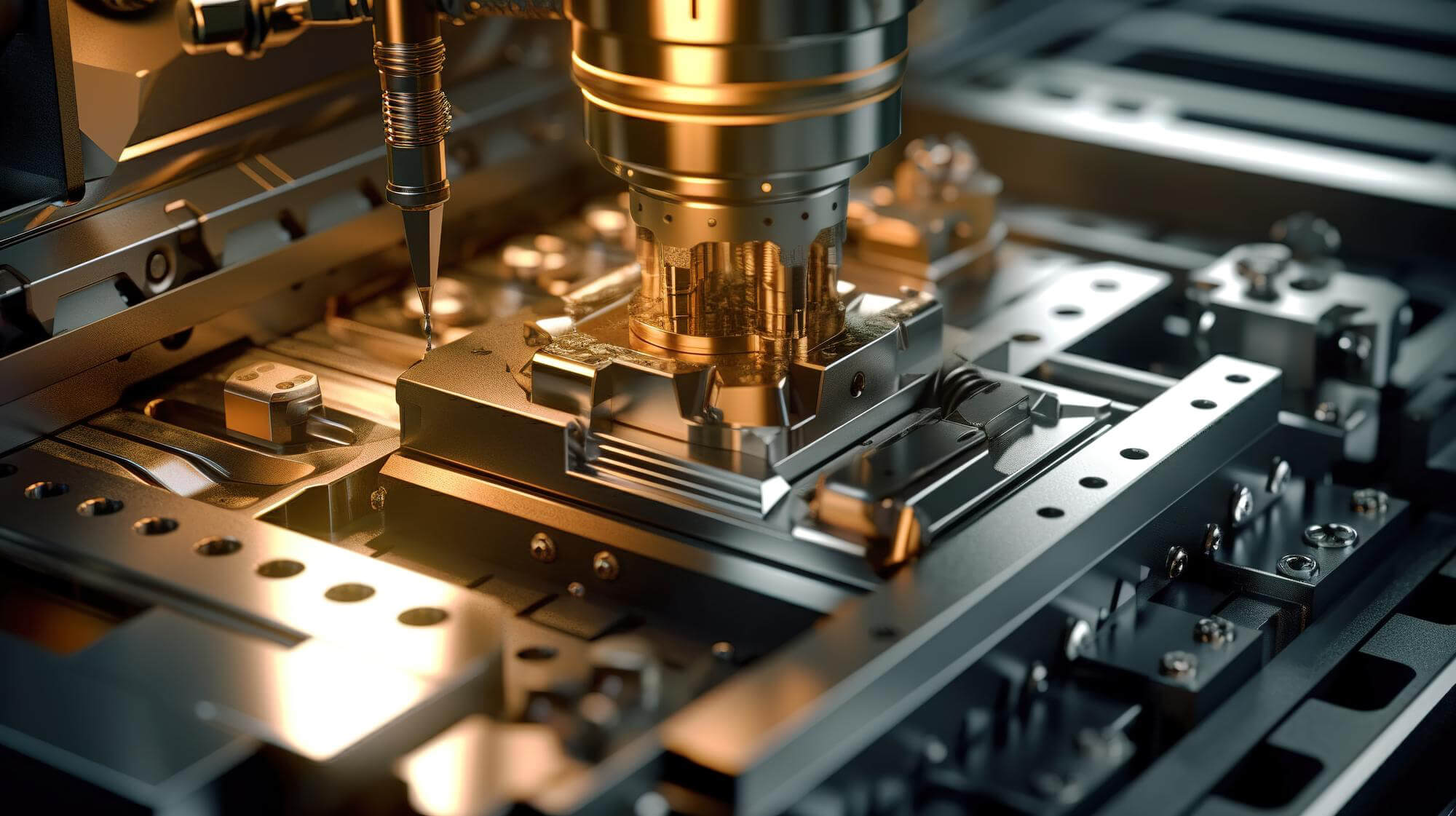When you step into the world of CNC machining, you quickly realize the importance of geometric precision. The relationship between a machine’s fixed points and the movable points of a workpiece is crucial for creating accurate and consistent parts. Understanding the axes of CNC machines is fundamental to mastering this art. Let’s delve into the geometric secrets of CNC machining parts and explore the detailed guide to machine tool axes.
The Basics of Machine Tool Geometry
Machine tool geometry is essentially the relationship between the fixed points of the machine and the variable points of the workpiece. CNC machines generally use a right-hand coordinate system to determine this relationship. The positive and negative directions of the axes are defined by standardized views. The basic rule for the Z-axis is that it is the direction along which a single-point cutting tool, such as a drill, reamer, wire, or laser beam, typically works.
Understanding the Coordinate Axes in Milling Machines
In vertical machining centers, there are three primary control axes: X, Y, and Z. The X-axis is parallel to the machine’s longest dimension, the Y-axis is parallel to the shortest dimension, and the Z-axis is the direction of the spindle movement.
Vertical Machining Centers:
- X-Axis: Moves the work table longitudinally.
- Y-Axis: Moves the work table transversely.
- Z-Axis: Moves the spindle vertically.
In horizontal machining centers, these definitions shift due to the machine’s design:
- X-Axis: Moves the table longitudinally.
- Y-Axis: Moves the column transversely.
- Z-Axis: Moves the spindle horizontally.
Horizontal machining centers often include an additional B-axis, which provides rotational movement, enhancing the machine’s capability to handle complex parts.
Axis Directions in Lathes
Most CNC lathes operate with two axes: the X-axis and the Z-axis. However, more advanced lathes can include additional axes like the C-axis and Y-axis, primarily for milling operations performed by powered tools.
Basic CNC Lathe Axes:
- X-Axis: Controls the cross-slide movement.
- Z-Axis: Controls the longitudinal carriage movement.
The addition of C-axis and Y-axis in lathes allows for more complex operations like milling, which can be particularly beneficial in achieving intricate details and reducing the need for multiple setups.
Advanced CNC Lathe Axes:
- C-Axis: Rotational axis for milling operations.
- Y-Axis: Provides additional movement for complex milling tasks.
Additional Axes in CNC Machines
Any CNC machine can be designed with one or more additional axes, typically designated as U, V, and W for the second set of linear axes parallel to the X, Y, and Z axes, respectively. For rotational axes, the additional axes are designated as A, B, and C, rotating around the X, Y, and Z axes, respectively. The positive direction of these rotational axes is determined using the right-hand rule.
Common Additional Axes:
- U, V, W Axes: Secondary linear movements parallel to X, Y, and Z.
- A, B, C Axes: Rotational movements around X, Y, and Z.
These additional axes enhance the machine’s ability to perform complex tasks with higher precision and efficiency.
Practical Examples and Applications
Consider a scenario in a manufacturing plant where precision and complexity are paramount. A horizontal machining center equipped with X, Y, Z, and B axes can perform tasks that would otherwise require multiple machines and setups. By understanding and utilizing the geometric relationships and additional axes, operators can streamline processes, reduce cycle times, and improve the quality of the final product.
Data Table: CNC Machine Axes Comparison
| Machine Type | Primary Axes | Additional Axes | Common Applications |
|---|---|---|---|
| Vertical Machining Center | X, Y, Z | Optional: A, B, C | General machining, drilling, milling |
| Horizontal Machining Center | X, Y, Z, B | Optional: A, C | Complex part machining, multi-surface operations |
| CNC Lathe | X, Z | Optional: C, Y | Turning, boring, milling (with powered tools) |
| Multi-Axis Machining Center | X, Y, Z, A, B, C | U, V, W (secondary axes) | Aerospace, automotive, medical device manufacturing |
Understanding the geometric relationships in CNC machining is essential for precision manufacturing. From the basic two-axis lathe to the advanced six-axis machining centers, each machine offers unique capabilities that can significantly enhance production efficiency and part quality. By mastering these geometric secrets, operators and programmers can fully utilize the potential of their CNC machines, paving the way for innovation and excellence in manufacturing.
Other Articles You Might Enjoy
- Applications and Advantages of Bronze CNC Machining
1. Introduction: The Enduring Allure of Bronze in CNC Machining In this opening section, we explore the timeless appeal of bronze as a material for CNC machining. From its rich…
- Innovative CNC Machining for Complex Surgical Tools
Introduction to CNC Machining and its Significance in Surgical Tools Manufacturing CNC machining, an acronym for Computer Numerical Control machining, plays a significant role in the manufacturing world. Being an…
- Precision Metalwork: Lightweight CNC Machining and Chrome Removal( cnc machine tools Norman)
CNC machining, a dominant force in the world of manufacturing, is intricately involved with creating complex parts out of lightweight metal, as well as removing chrome from metal components. This…
- Precision CNC Machining of Steel: High-Volume Production
Precision CNC Machining and High-Volume Production As an integral part of modern manufacturing processes, Precision Computer Numerical Control (CNC) machining brings about unmatched accuracy and consistency in the production of…
- Plastic vs. Metal CNC Machining: A Detailed Comparison?
CNC Machining: An Essential Process Across Industries Computer Numerical Control (CNC) machining is a digital manufacturing technology that makes use of pre-programmed computer software to dictate the movement of various…
- Revolutionizing CNC Machining for the Future of Smart Wearables
Introduction: CNC Machining and Smart Wearables CNC (Computer Numerical Control) machining is a manufacturing process that utilizes computerized controls to operate and manipulate machine tools, converting raw materials into finished…






